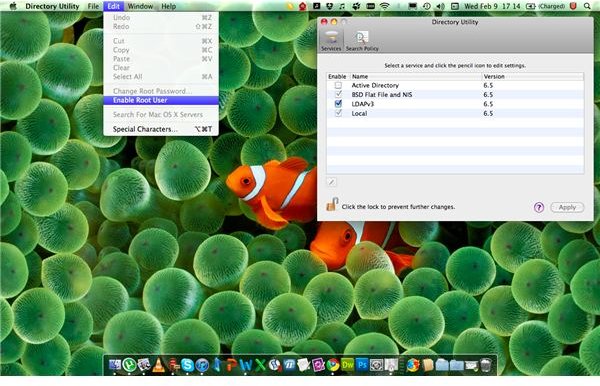Root User in OS X: How To Enable and Use the Root User in All the Versions of Mac OS X
What Is the Root User
In Mac OS X, the “root” user (also known as superuser and the administrative user) is a privileged user who has full read and write rights to all parts of the Mac file system. The main purpose for the root user account is to perform specific administration and monitoring tasks. This is especially useful for the more tech-savvy users and these that came from a different UNIX-built operating system. Please note that the Root User is enabled by default in the server version of Mac OS X.
Enabling Root User - The Mac OS X 10.4 and Earlier Method
To Enable the root user in Mac OS X 10.4 or earlier there are a few steps to take. For all versions there are a few preparational steps that are necessary for a proper outcome. These steps are:
- Click Finder in the Dock.
- Open the Go menu in the top bar and select Applications
- Open the Utilities folder
- Open NetInfo Manager
- Click the lock on left-hand side of the window.
- Enter name and password for an administrator account, then press Ok
After these steps are correctly initiated there are only a few things left to do to enable root users. These steps differ per operating system. In Mac OS X 10.2 and later there is really only one thing left to do, which is to open the Security menu and select Enable Root User.
For Mac OS X 10.0 or 10.1 users the steps are a bit more complicated but still very doable. Open the Domain menu and select Security. From the submenu, select Enable Root User. From now on the root user is activated. However, at this stage it is possible that some minor errors may occur. The best way to troubleshoot these is as follows:
- If a root user password has not been previously set, you will see a message on your screen saying “NetInfo Error”. Click on Ok
- Here you can enter the root password. Once entered, click on Set
- Re-Enter the password and click on Verify for verification
- Click on the lock icon again to keep changes.
Enabling Root User - The Mac OS X 10.5 and 10.6 Method
The Leopard (10.5) and Snow Leopard (10.6) releases saw a big increase in user friendliness and this should also mean that enabling the Root User will be easier. However there are still a few necessary steps before the desired outcome is achieved. The method for Mac OS X 10.5 is as follows:
- Open up Finder and then select Utilities from the Go menu in the top bar
- Open Utilities Directory
- Click on the lock in the Directory Utility window
- Enter name and password for an administrator account, and then press Ok
- Open the Edit menu and select Enable Root User
- Enter the password that you want to use for “root” in the Password and Verify fields and then click on Ok
The Method for 10.6 is again a bit different, albeit only for the location of Utilities Directory. The new location for the Utilities Directory is in /System/Library/CoreServices.
It is also possible to log in as root. To enable this feature, the following steps should be followed:
- If you’re already logged in, open the Apple menu and select Log Out.
- If you’re logging in using usernames with pictures, then click on Other.
- Type in “root” in the Name box.
- Type in the password in the Password box. This is the one you defined while enabling the root user account.
One Last Tip and the Dangers of Enabling the Root User in OS X
Although the above steps are efficient for enabling the root user, there is one more method that seeminly works for any version of Mac’s OS X system. For this the terminal application must be opened and the following line entered: sudo passwd root. After entering the administrative password the user is prompted to enter a new password for root, which finishes the process.
Please note that enabling the Root User is unnecessary if you don’t know what you are doing. It could lead to instabilities and your computer will be more exposed to potential security treads. If you know what you are doing, however, the Root User can definitely be a good tool.
